We continue to marvel at the complexity and idiosyncratic beauty of our capsule rugs made in Jaipur. The serendipitous colour blends, unique to each rug, are a result of a vegetable dyeing process.
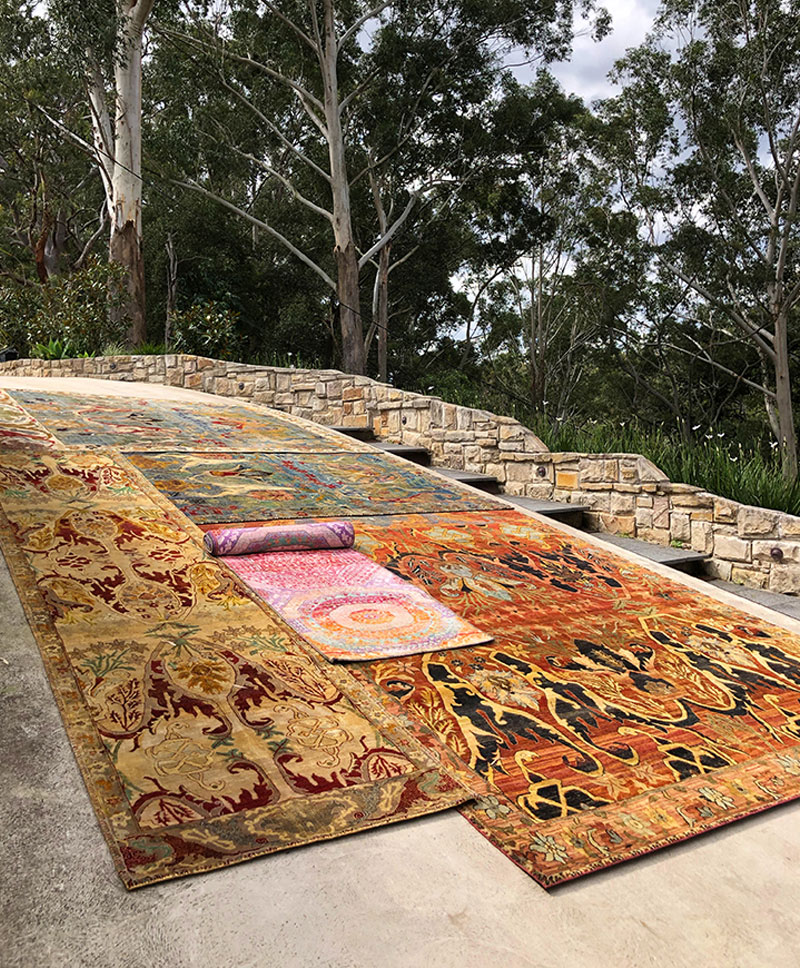
“It is a testament to human ingenuity how a process this complex was developed, like other historical dyeing techniques, solely by trial and error.” Sachio Yoshioka
In the past all hues were made from plants and other natural minerals.

Dyes from plants can be made from bark, berries, flowers, leaves and roots.
Vegetable dyes fell out of use after the invention of synthetic colours in the mid-19th century, but this Mill in Jaipur has worked hard to preserve the ancient vegetable dyeing techniques.

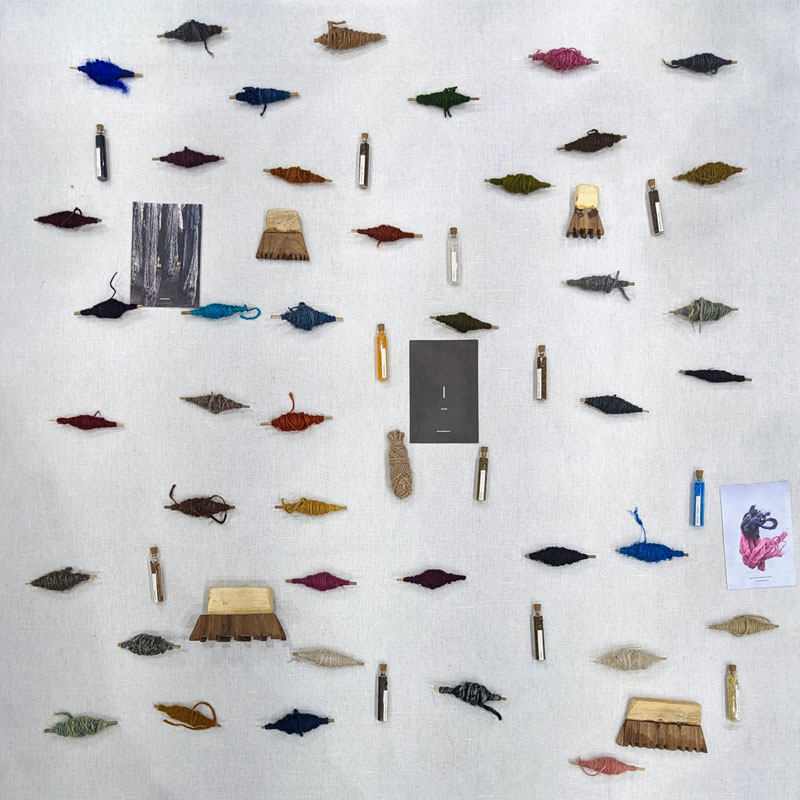
Reds and Pinks
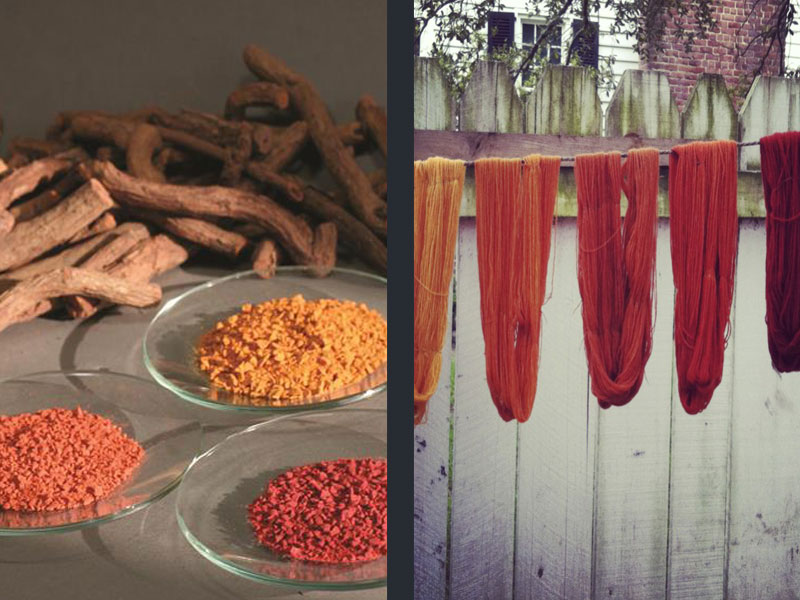
One of the oldest plants used to make red dye is the madder roots (Rubia tinctorum and Rubia cordifolia). Madder and related plants of the genus Rubia are native to many temperate zones around the world and were already used as sources of good red dye in prehistory. Madder has been identified on linen in the tomb of Tutankhamun and was a dye of commercial importance in Europe, being cultivated in the Netherlands and France to dye the red coats of military uniforms prior to the development of synthetic alizarin dye in 1869.
Yellows
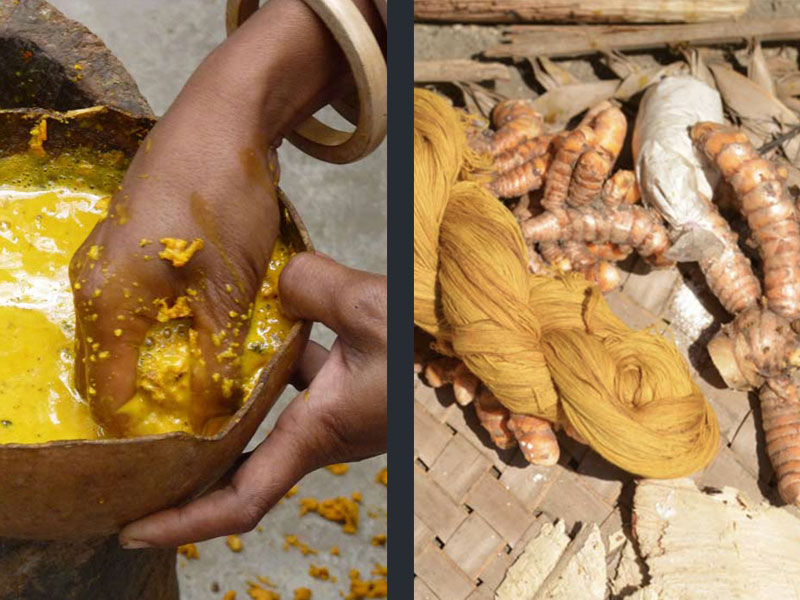
Yellow dyes can be extracted from saffron, pomegranate rind, turmeric, safflower, onionskins, and a number of weedy flowering plants.
Blues
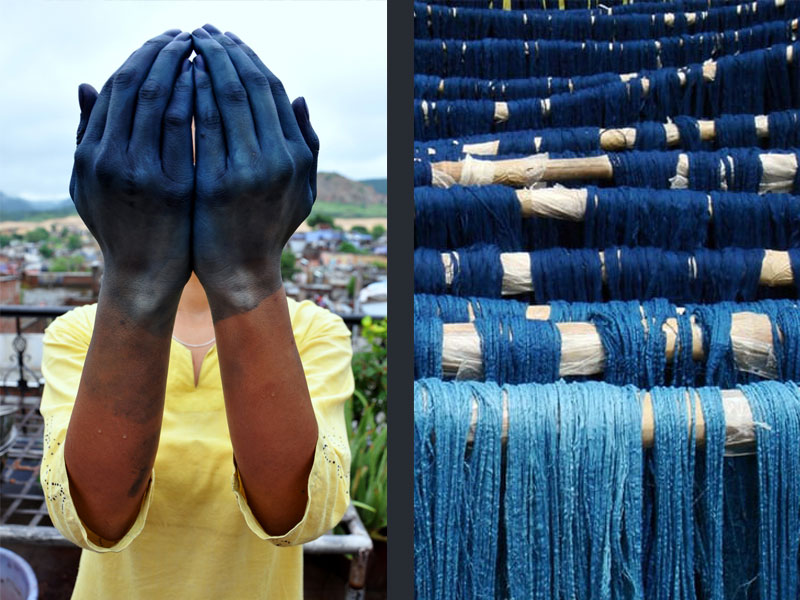
Blue colourants around the world were derived from indigo dye-bearing plants, in Asia it was primarily true indigo (Indigofera tinctoria). India is believed to be the oldest centre of indigo dyeing in the Old World. It was a primary supplier of indigo dye to Europe as early as the Greco-Roman era. The association of India with indigo is reflected in the Greek word for the dye, which was indikon (ινδικόν). The Romans used the term indicum, which passed into Italian dialect and eventually into English as the word indigo.



